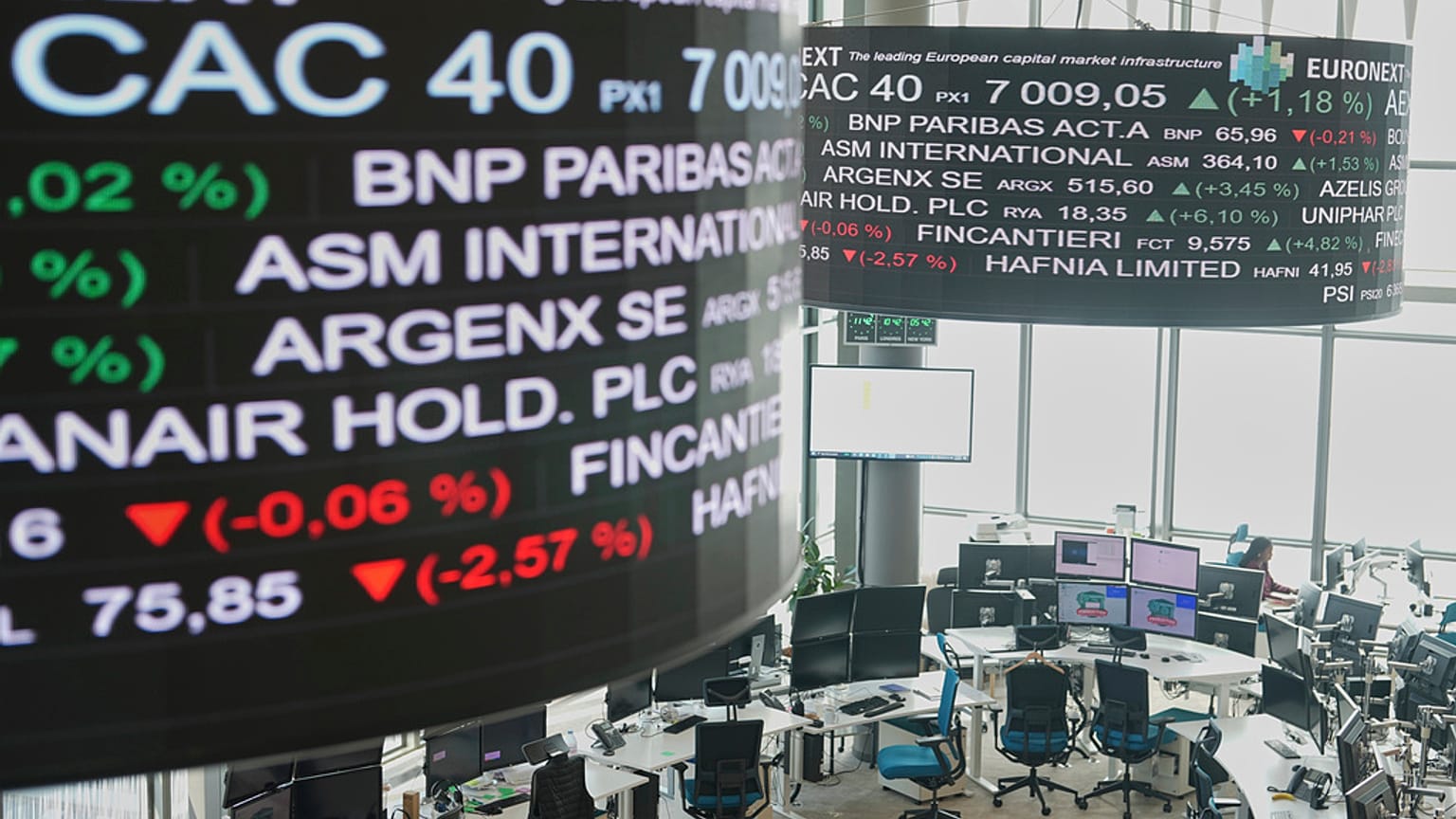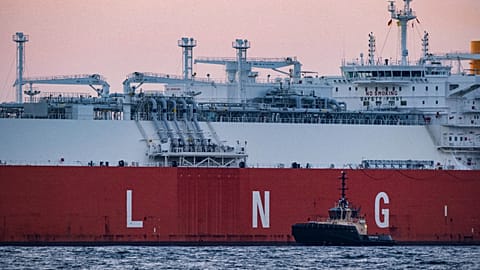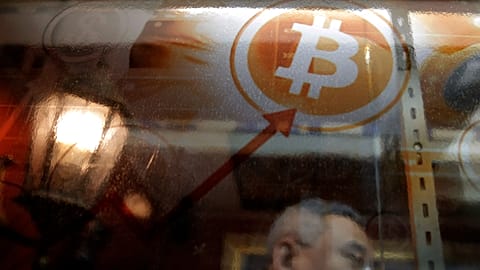European markets bounced back from recent weakness on Tuesday morning amid persistent geopolitical uncertainties.
Morning trading in Europe marked a cautious recovery from recent weakness on Tuesday. Most European equity indexes opened modestly higher, after Asian markets extended gains and US Futures slipped slightly.
Just before midday, Milan's stock exchange was leading, up 0.80%. That's thanks to gains from banks including UniCredit and Intesa Sanpaolo, energy company Eni, and Leonardo, Italy's leading aerospace and defence company.
Defence stocks fuelled gains in Germany too, although not enough to lift the DAX index out of its dip of 0.13%. German battleship and submarine maker TKMS continued to overperform on Tuesday morning, after its IPO on Monday.
TKMS made its debut in Frankfurt at around €60 per share and kept rising on Tuesday, by 6.28% in the morning. Germany's Rheinmetall AG was also up by 0.48% in Frankfurt, but BAE Systems in London was down by 0.91%.
European defence and aerospace giants Airbus, Thales, and Leonardo reportedly agreed to a satellite merger. On Tuesday morning, share prices were largely unchanged — aside from those in Leonardo, which jumped 0.56%.
The FTSE 100 in London was up by 0.22%, supported by gains in bank share prices and energy stocks. Utilities were also in demand. Other leading European stock indexes, including the benchmark STOXX 600 were nearly flat. Paris' CAC 40 rose a modest 0.13% just before midday.
“Wall Street enjoyed a particularly strong session on Monday, and that optimism has extended to Asia and Europe on Tuesday," said Russ Mould, investment director at AJ Bell. He added: "the focus is now on US interest rate cuts, the new corporate reporting season, and US-China trade talks".
In other dealings, gold futures retreated after the precious metal reached beyond $4,390 an ounce, a new record. By 11.45 CEST, its value slid nearly 2%.
The price has climbed 60% since the beginning of the year, fuelled by elevated safe-haven demand linked to geopolitical tensions, economic uncertainty, and a weakening US dollar. HSBC expects the rally for gold to continue in 2026, pushing the price as high as $5,000.
Crude oil prices were slightly up on Tuesday morning. The US benchmark cost $57.62 a barrel, while the international benchmark Brent was traded at $60.99.
The euro slipped to $1.1633 from $1.1641.
Asian markets saw gains after Takaichi victory
US stock futures were down marginally on Tuesday morning, following yet another rally on Monday. Asian markets extended gains, led by Japan's benchmark creeping closer to the symbolically important 50,000 level for the first time as lawmakers chose conservative hardliner Sanae Takaichi to become the country's first female prime minister.
The US dollar rose to 151.31 Japanese yen from 150.75 yen. If Takaichi gets her way in slowing interest rate increases by the Bank of Japan, the yen is likely to remain relatively weak against the dollar. That will hinder the central bank's efforts to curb inflation, which now stands above its target rate of about 2%.
Hong Kong's Hang Seng added 0.65% and the Shanghai Composite index was up 1.36%.
What moved investors Tuesday?
Expectations that US President Donald Trump will meet with Chinese President Xi Jinping later this month during a regional summit have raised hopes for an easing of trade tensions between the world's two biggest economies.
Chinese Communist Party leaders are meeting this week to set a policy blueprint for the next five years.
This week, investors are going to watch a list of earnings reports, including Coca-Cola on Tuesday, Tesla on Wednesday and Procter & Gamble on Friday.
The pressure is on companies to show that their profits are growing following a torrid rally of 35% for the S&P 500 from a low in April. Companies face pressure to improve their profitability to counter fears that stock prices have gone too high.
Corporate profit reports have also taken on more importance because they offer windows into the strength of the US economy when the US government's shutdown has delayed important economic updates.
That's making the job of the Federal Reserve more difficult, as it tries to decide whether high inflation or the slowing job market is the bigger issue for the economy. Fed officials have indicated they're likely to cut rates several more times in order to give the economy a boost. But that could be a mistake if inflation worsens, because low interest rates can push it even higher.
On Friday, the US government will issue an update on inflation during September. The report was supposed to arrive earlier this month, and the Social Security Administration needs the numbers to calculate cost-of-living adjustments for beneficiaries. But the government also said: "No other releases will be rescheduled or produced until the resumption of regular government services."


















